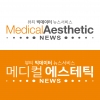You may have experienced itching and redness in the area where you wore metal accessories or sore after touching the detergent. Even healthy people may have an abnormal reaction when they meet an external substance that is not suitable for them. This is called ‘contact dermatitis’. Contact dermatitis means any dermatitis caused by contact with external factors. According to Dr. Kyung Tae Hong, a founder of Yonsei Modern Dermatology Clinic, contact dermatitis is one of the most common skin diseases, along with atopic dermatitis and seborrheic dermatitis.

Contact dermatitis can be divided into ‘irritant contact dermatitis’ and ‘allergic contact dermatitis’ according to the causative agent and reaction pattern. The former appears due to external factor stimulation itself and can cause dermatitis in almost everyone, while the latter only appear in person who have an allergic reaction to external factors, not everyone who meets it. The symptoms of both are similar, eczema-type lesions accompanied by erythema and edema appear, and blisters, oozing, and itching are also present. The lesion lasts for a long time and may even lead to pigmentation.
Irritant contact dermatitis is closely related to the ‘skin protective barrier’. When the skin barrier is broken by external factors, the skin cannot be protected, and when the skin is stimulated again, irritant contact dermatitis occurs.
External factors that cause irritant contact dermatitis are strong acids and alkalis, toxic substances, and chemicals such as soap and detergent. For example, it is easy to appear in the case of medical workers who handle alcohol swabs with bare hands, because alcohol breaks down the protective barrier of the skin. Irritants from vegetables can also be caused by repeated skin irritation, and it is also common in frequent contact with water, such as frequent hand washing or showering. ‘Housewife eczema’, which occurs when excessive exposure to water, detergent, and soap for a long time, is a representative example of irritant contact dermatitis.
As mentioned earlier, allergic contact dermatitis appears in people who are allergic to external factors. An allergic reaction usually occurs when the skin nervous system reacts to a specific substance (antigen). At first, there is nothing wrong, but after being sensitized, a reaction may appear whenever the antigen meets the skin.
The most common cause of allergic contact dermatitis is metal. Among metals, nickel (Ni) is the main factor. Nickel is used in various metal accessories and occurs mainly on the ears and neck. Allergic reaction appears more frequently in women than men.
Rhus dermatitis that can occur after hiking is also a type of allergic contact dermatitis, which is caused by an allergic substance called urushiol from the lacquer tree. It can occur without direct contact with lacquer, and it is common to observe patients with contact dermatitis after eating lacquer and chicken, duck together for health purposes.
In addition, there are many different causes such as ginkgo (ginkgo fruit), rubber etc. Peeling ginkgo bark from a ginkgo tree with bare hands may be caused by an allergen in the bark. If moisture builds up inside commonly used rubber products, especially long-wearing rubber gloves, it can cause problems when bacteria proliferate in large quantities.
If the symptoms of contact dermatitis are mild, ointment may be prescribed, and in severe cases, antihistamines may be prescribed. The most important thing is to block the causative external factor, and in both types, symptoms can improve if there is no contact with the causative external factor.
Housewives’ eczema, once occurred, becomes chronic dermatitis and does not heal well, so it is better to prevent it in advance. To prevent housewife eczema, it is important to avoid direct contact with water or detergent as much as possible. Wearing rubber gloves after putting on cotton gloves can help prevent it.
Dr. Hong advised, “In the past, I have an experience that a patient with water-induced contact dermatitis. I asked the patient to wear cotton gloves inside the rubber gloves, and the contact dermatitis disappeared after a week. Thus, if the causative agent is removed, the contact dermatitis gets better without any special treatment. Wearing rubber gloves on your bare hands can cause allergic contact dermatitis caused by rubber, and sweating can cause irritant contact dermatitis. Wearing cotton gloves inside the rubber gloves is helpful. It can also occur on the arm that meet with rubber gloves, so I recommend that lowering sleeves and wear rubber gloves over them.”

If you sweat a lot while wearing accessories or wear wet accessories, metal components may corrode and worsen symptoms, so it is better not to wear accessories while exercising. It is recommended to wash and dry any accessories that are stained with sweat or water before wearing them. If the metal plating is peeled off, an allergic reaction may occur, so do not wear accessories with the plating peeling off.


